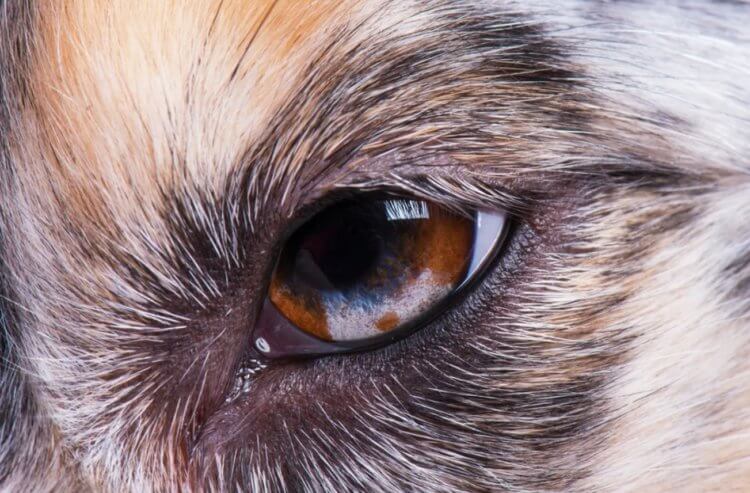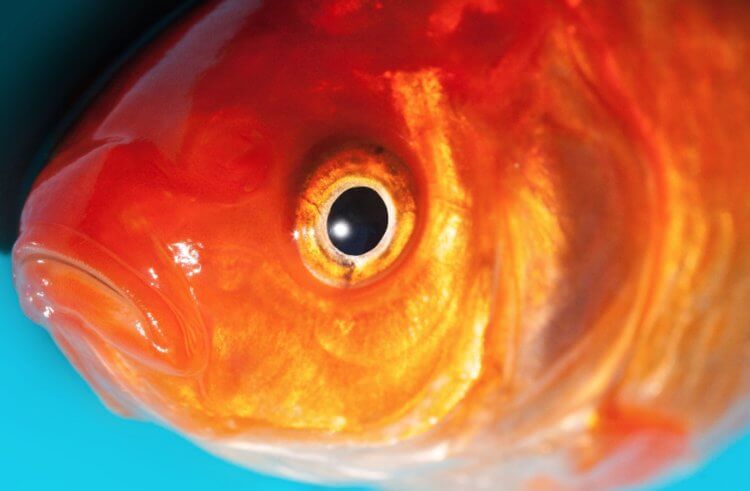The vast majority of living organisms on Earth have eyelids – movable folds of skin that are needed to moisturize and protect the eyes. To maintain healthy vision, we reflexively blink approximately 15-20 times per minute, using special muscles on the face. In humans, the structure of the eyelids is relatively simple, but in some animal species they are much more complex. For example, cats and dogs living next to us have athird eyelid, which is necessary for additional protection of the visual organs from dryness and damage. The distant ancestors of man also had a third eyelid, but evolution decreed that it was not preserved. Why did this happen?

In many animals, the third eyelid plays a very important role. Image source: iflscience.com
Contents
- 1 What is the third eyelid
- 2 What is it for? third eyelid
- 3 Why people don’t have a third eyelid
- 4 Which animals don’t have eyelids
What is a third eyelid
The upper and lower eyelids of all animals move vertically and are always visible. The third eyelid in cats, dogs and many other animals moves horizontally, like a wardrobe door. In addition, most of the time the third eyelid is hidden: owners of cats and dogs can notice it when the pet sleeps with its eyes slightly open or when they are slowly petted.

The third eyelid of a dog. Image source: pdsa.org.uk
While the upper and lower eyelids are made of skin, the third eyelid is a fold ofthe conjunctiva—a thin, clear mucous membrane that covers the white part of the eye (sclera) and the inner surface of the eyelids. In addition to cats and dogs, some other species of mammals and even birds have a third eyelid.
What is the third eyelid for?
For many years, scientists were unable to name the exact function of the third eyelid. According to research, the third eyelid serves the same function as the main eyelids – it is needed for additional hydration and elimination of debris.
The third eyelid is vital for both domestic and wild animals. For example, breeds of dogs with flat faces are heavily dependent on them – their eyes are bulging and are especially susceptible to drying out and injury.

Pugs have very vulnerable eyes. Image source: sobakovod.club
In wild animals, the third eyelid works even more interestingly. In camels, the third eyelid is highly transparent, so during sandstorms they can walk forward, completely covering their eyes with a protective layer.
In the marine mammals manatees, which are relatives of the extinct sea cows, a translucent third eyelid is necessary to preserve vision while snorkeling.

The third eyelid helps eagles fly at high speed. Image source: audubon.org
Birds can also have a third eyelid, which protects against air currents during fast flight. Some species of birds use a protective layer of the eye while feeding their young – when a parent brings another worm, hungry chicks can easily peck it in the eye. Thanks to the third eyelid, they manage to escape from sudden attacks from their young.
In the polar regions, where the ground is covered with shiny snow, ultraviolet rays can easily damage (literally burn!) the eyes. To prevent snow blindness, many Arctic animals like polar bears have third eyelids that absorb ultraviolet radiation.
Read also:A selection of the most frightening animals in the history of the Earth
< h2>Why don’t people have a third eyelid
Humans, like many other mammals, had distant ancestors with a third eyelid. We are not talking about Neanderthals or even ancient apes – we are talking about prehistoric animals that have long since died out, but from which we descended.
The third eyelid that our ancestors had was not passed on to us. According to scientists, this is due to the fact that the eyes of humans and primates are less exposed to threat during hunting. In addition, they are so sensitive that the upper and lower eyelids automatically close in case of danger.

Human semilunar fold. Image source: octobercinema.ru
However, the third eyelid in humans has not disappeared without a trace. In the inner corner of the eye, closer to the nose, we have a small layer of tissue called thelunate fold. It looks like a small piece of pink and reddish tissue. It is considered a vestigial organ that once upon a time performed an important function, but today has no benefit.
You will be interested:Why there are no people with colored hair
Which animals do not have eyelids
People have upper and lower eyelids, cats and dogs have an additional, third eyelid. But some animal species have neither one nor the other. For example, fish do not have eyelids, because their eyes are already perfectly wetted by water. Also, snakes do not have eyelids, because their eyes are protected by transparent scales.

Fishes don’t have eyelids because their eyes are already perfectly wet. Image source: metronews.ru
Have you already subscribed to our Zen and Telegram channels? If not, it's time to fix it!
Finally, it is worth noting that we have another similar article “Why people don’t grow hair – the most popular hypotheses.” A must read!